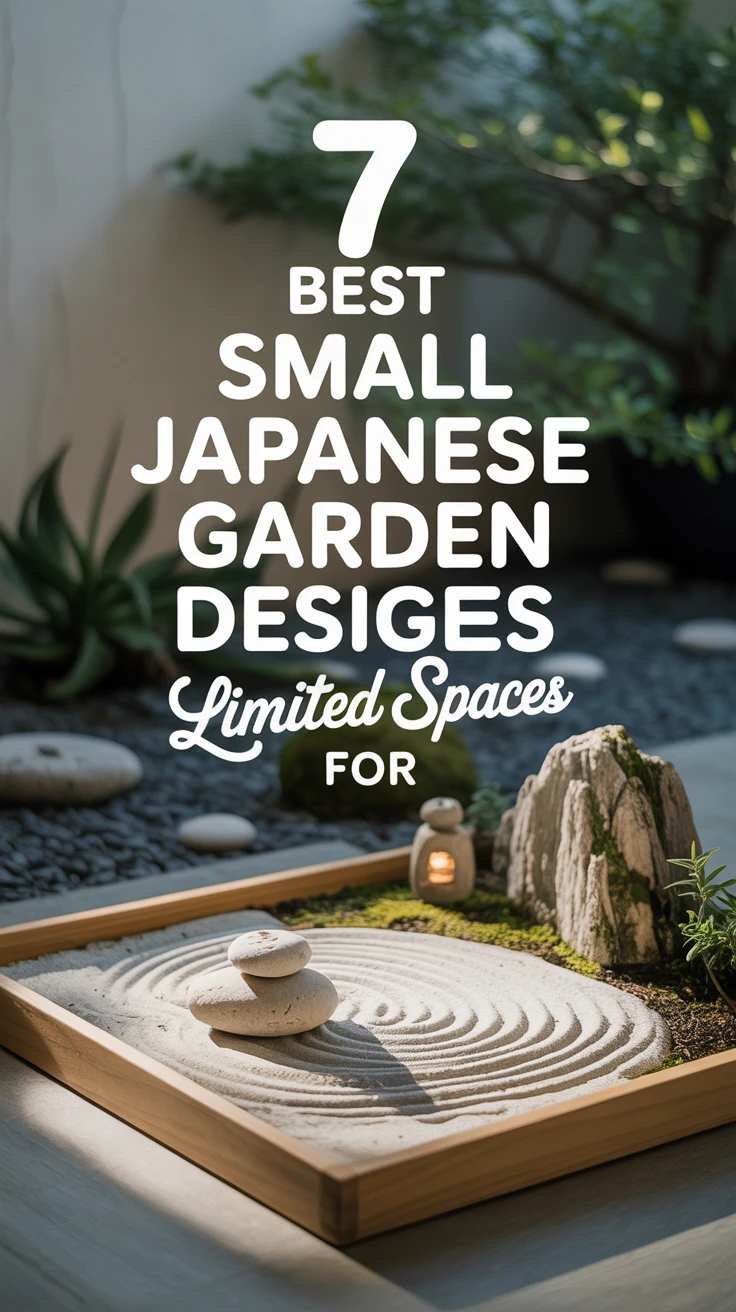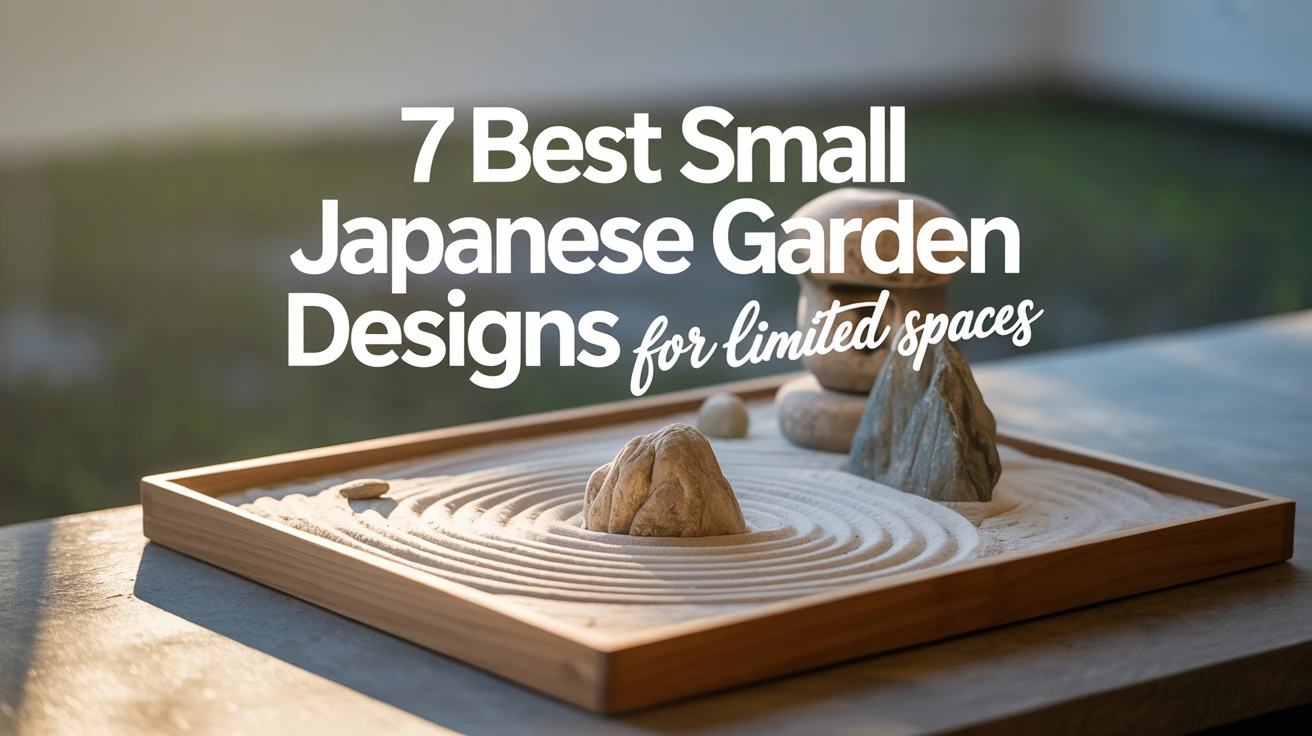
Introduction
Creating a small Japanese garden offers a serene escape in even the most limited spaces. As someone who’s designed dozens of compact gardens over the years, I’ve discovered that Japanese garden principles are particularly well-suited for small areas. The philosophy of minimalism, careful composition, and symbolic representation allows these gardens to convey profound beauty without requiring extensive square footage.
Whether you have a tiny balcony, a narrow side yard, or just a corner of your existing garden to transform, Japanese design principles can help you create a space that feels both expansive and peaceful. In this article, I’ll share seven of my favorite small Japanese garden designs that I’ve implemented for clients with space constraints, along with practical tips to help you bring these ideas to life in your own home.
1. Embrace Simplicity with a Zen Garden (Karesansui)
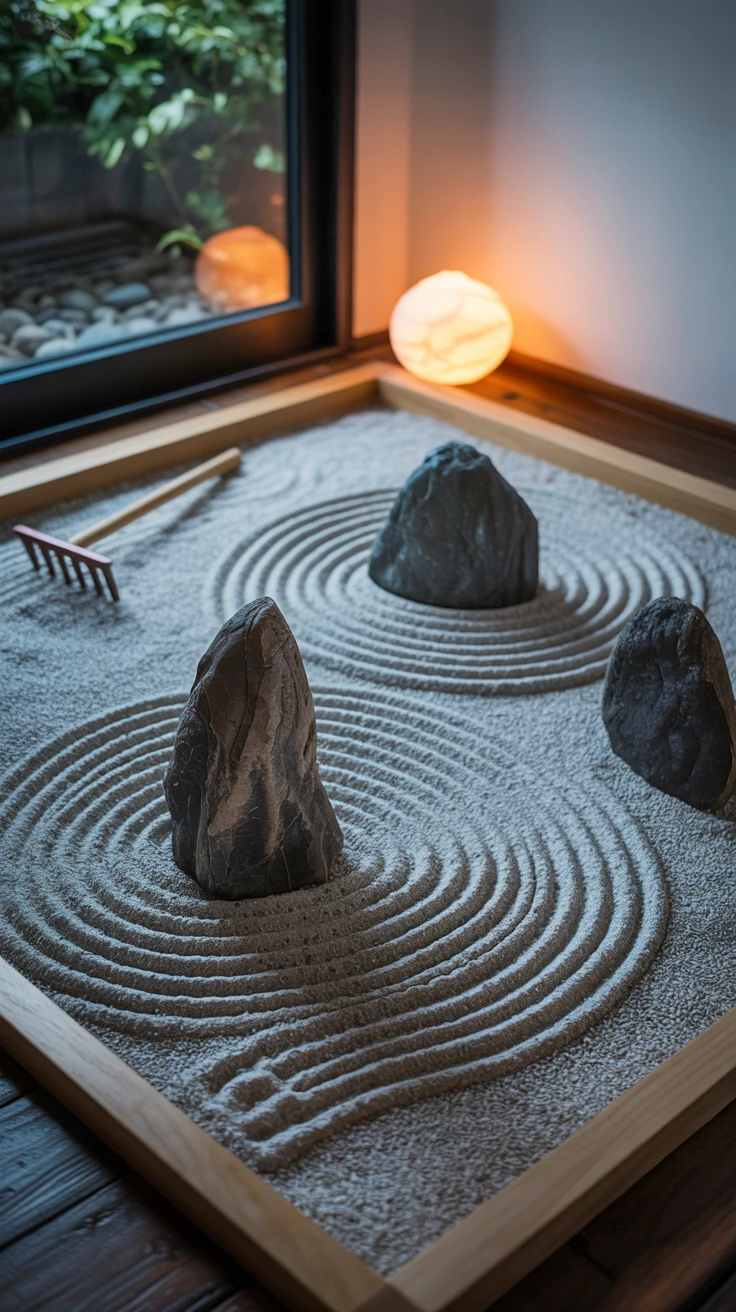
The first time I created a Zen garden in a tiny 4×6 foot space, I was amazed at how impactful it became. A Zen garden, or karesansui, represents one of the most space-efficient small Japanese garden ideas you can implement. These dry landscape gardens use gravel or sand to symbolize water, with carefully placed rocks representing islands or mountains.
The beauty of a Zen garden lies in its minimalism. I’ve found that even the smallest space can be transformed into a meditative retreat with just a few elements:
- Fine gravel or sand (white or light gray works best)
- A few carefully selected rocks of varying sizes
- A wooden rake for creating patterns
- Optional: A single ornament like a small stone lantern
For my own tiny backyard Zen garden, I used a wooden frame to contain the gravel and positioned three rocks in an asymmetrical arrangement—a principle called “triangulation” that creates visual interest. The act of raking patterns into the gravel has become my weekly meditation practice.
Pro Tip: When selecting rocks, choose ones with interesting shapes and weathered surfaces. I once made the mistake of using perfectly smooth rocks, which looked artificial. Natural, aged stones with character create a more authentic feeling.
2. Create a Tranquil Retreat with Tea Garden Elements

Tea gardens (roji) traditionally serve as transitional spaces leading to a tea house. I’ve adapted these principles for small spaces by incorporating key elements that evoke the feeling of a tea garden without requiring much room.
One of my clients had only a 10×10 foot corner to work with, yet we managed to create a stunning tea garden-inspired space by focusing on a few essential features:
- A simple stone path (just 3-4 stepping stones)
- A stone water basin (tsukubai)
- A small stone lantern
- Moss or ground cover plants
- A simple bench or seat
The arrangement creates a journey, even in a confined space. The stepping stones slow down movement through the garden, encouraging mindfulness—something I’ve noticed transforms how people interact with even the smallest garden.
Pro Tip: Use evergreen plants like Japanese holly (Ilex crenata) or dwarf Japanese cedar (Cryptomeria japonica ‘Tansu’) to provide structure year-round. I learned this lesson after my first tea garden looked barren during winter months!
3. Transform Tight Spaces with Courtyard Garden Concepts
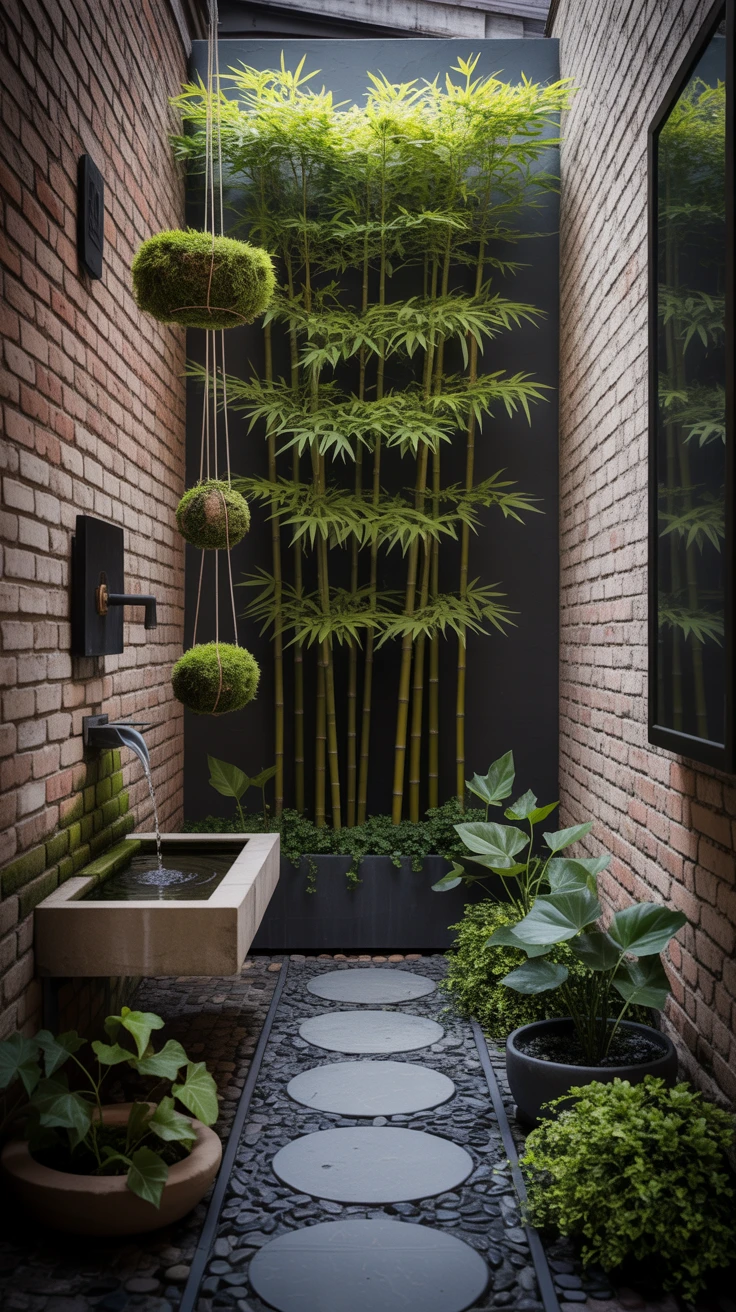
Tsubo-niwa (courtyard gardens) were traditionally designed for small, enclosed spaces between buildings in Japan. These gardens make perfect templates for modern urban environments like light wells, small patios, or enclosed balconies.
I once transformed a 6×8 foot concrete patio into a stunning tsubo-niwa by using:
- Vertical planting (bamboo and Japanese maples in containers)
- Wall-mounted features (a small water spout and basin)
- Hanging elements (moss balls or kokedama)
- Floor-level interest (decorative pebbles and stepping stones)
The key to success with courtyard gardens is thinking three-dimensionally. I made a critical error in my early designs by focusing only on the ground plane. Now I always ensure visual interest at multiple levels—from ground cover to mid-height features to taller vertical elements.
Pro Tip: Use mirrors strategically to create the illusion of more space. I placed a small mirror behind bamboo in one corner of a courtyard garden, and it doubled the perceived depth while reflecting light into a previously shadowy area.
4. Add Serenity with Miniature Water Gardens
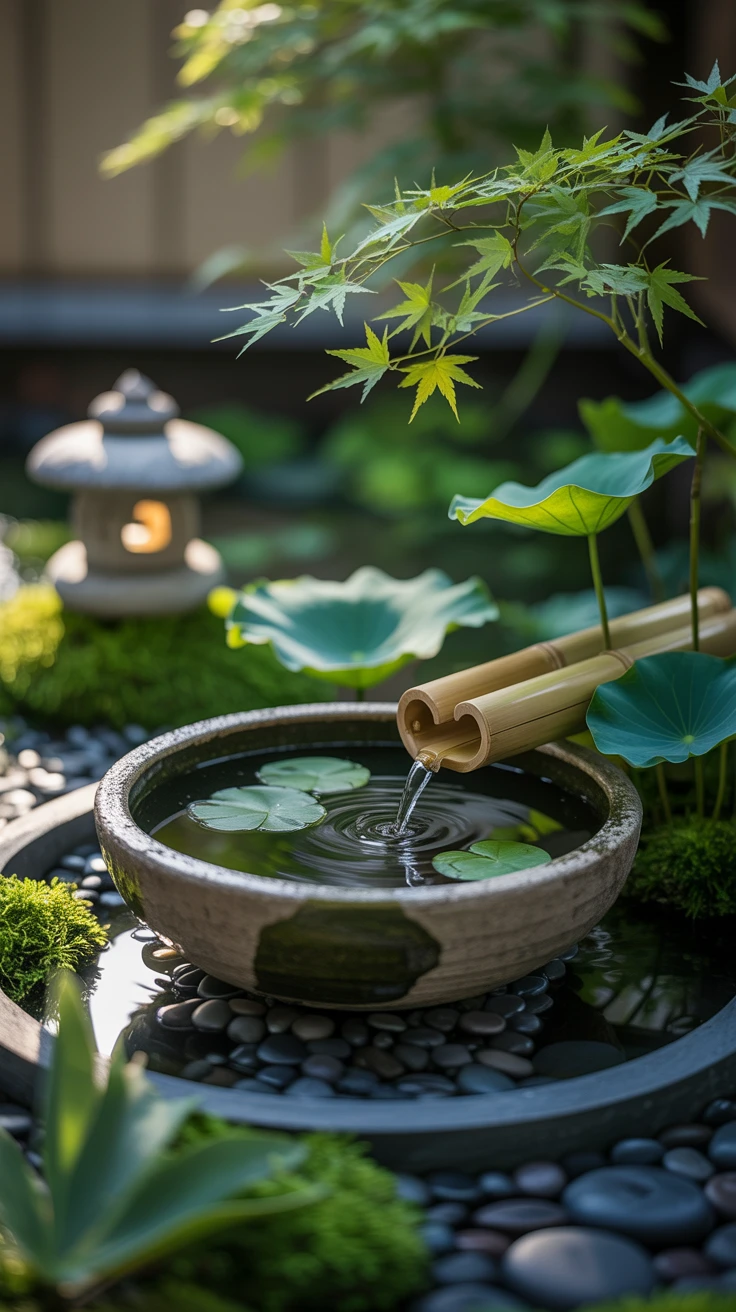
Water is central to Japanese garden design, but you don’t need a large pond to incorporate this element. Some of my most successful small Japanese garden projects have featured miniature water features that create the sound, movement, and reflective qualities of water in minimal space.
Options for small-space water features include:
- Ceramic water bowls with floating plants or pebbles
- Tiny recirculating fountains (as small as 12 inches in diameter)
- Shallow container ponds with miniature water plants
- Shishi-odoshi (deer scarer) bamboo fountains
- Tsukubai (stone water basins)
I remember installing a small ceramic bowl fountain in a 3×5 foot garden nook that transformed the space completely. The gentle sound of water masked urban noise and created a focal point that made the tiny area feel purposeful and complete.
Pro Tip: For the smallest spaces, consider a suikinkutsu—a buried pot that creates melodic water sounds when water drips into it. I’ve hidden these beneath a stone water basin in gardens as small as 4×4 feet with remarkable results.
5. Elevate Your Design with Bonsai and Potted Plants
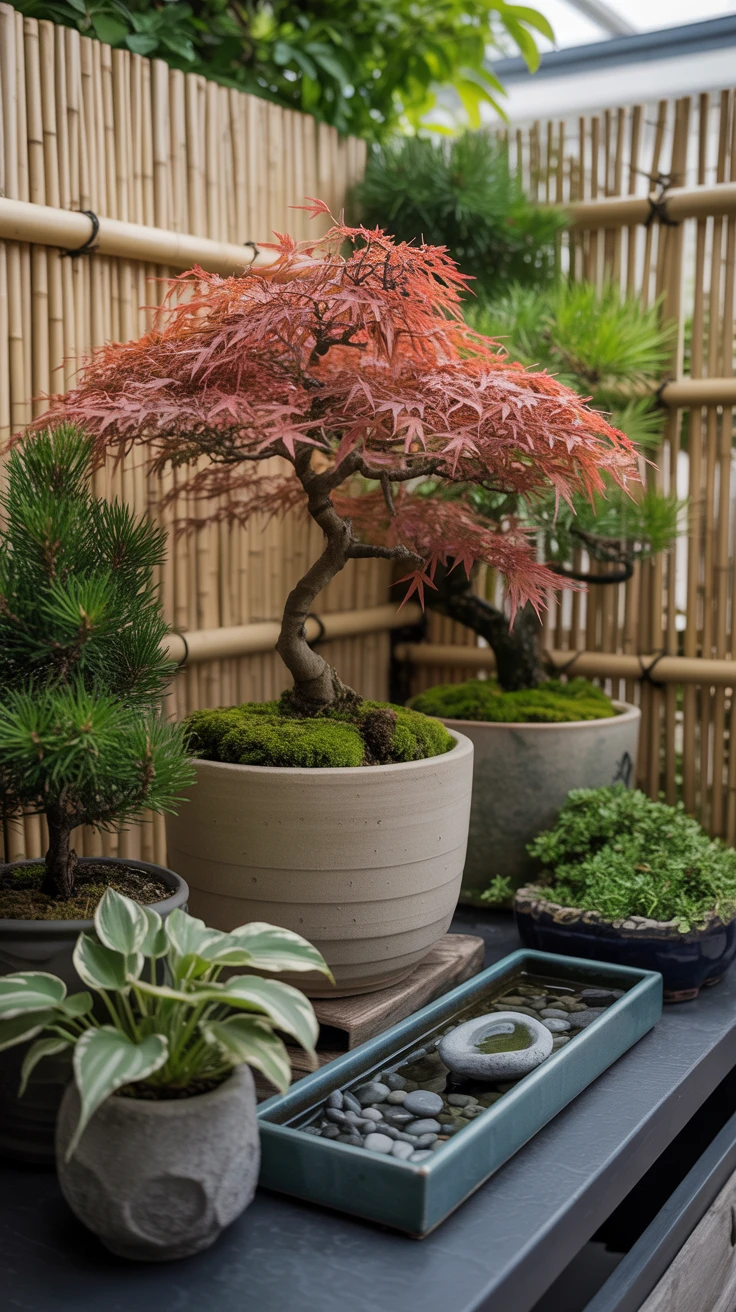
Bonsai trees epitomize the Japanese art of creating beauty in miniature form. When space is at a premium, potted plants—especially bonsai—allow you to incorporate the essence of a Japanese garden without committing to in-ground planting.
In my smallest garden project (a 3×6 foot apartment balcony), I created a complete small Japanese garden using only containers:
- A single Japanese maple bonsai as the focal point
- Several smaller accent plants (dwarf juniper, moss, miniature hostas)
- A shallow tray with pebbles and a tiny water feature
- A small bamboo fence as a backdrop
The arrangement of these elements followed Japanese design principles of asymmetry and created a complete garden experience in a tiny footprint.
Pro Tip: Use containers with contrasting textures but harmonious colors. I once made the mistake of using brightly colored glazed pots that distracted from the plants themselves. Now I stick to natural materials like unglazed ceramics, stone, or weathered wood that complement rather than compete with the plantings.
6. Delight in Pathways and Stepping Stones
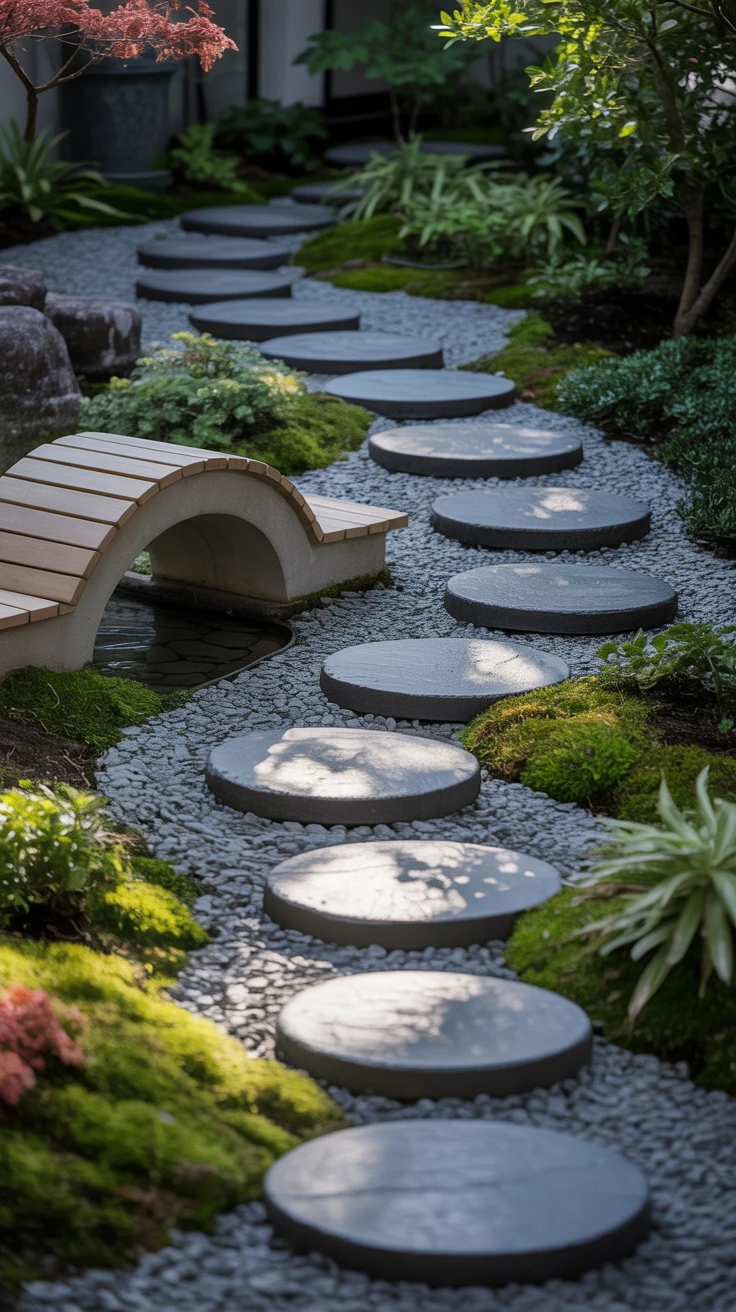
Pathways serve both practical and philosophical purposes in Japanese gardens. Even in the smallest space, a thoughtfully designed path can create a sense of journey and discovery.
For compact gardens, consider these pathway approaches:
- Offset stepping stones that slow movement through the space
- Miniature bridges over small water features or gravel “streams”
- Contrasting materials to define different garden areas
- Narrow gravel paths bordered by moss or ground cover
I’ve found that the size of stepping stones matters tremendously in small gardens. In one tiny space, I initially used standard-sized stones that overwhelmed the area. Replacing them with smaller, thinner stones immediately made the garden feel larger and more appropriately scaled.
Pro Tip: Place stepping stones in a staggered pattern rather than a straight line. This not only creates visual interest but also forces visitors to slow down and be mindful of each step—enhancing the meditative quality of even the smallest garden.
7. Illuminate Your Space with Garden Lighting
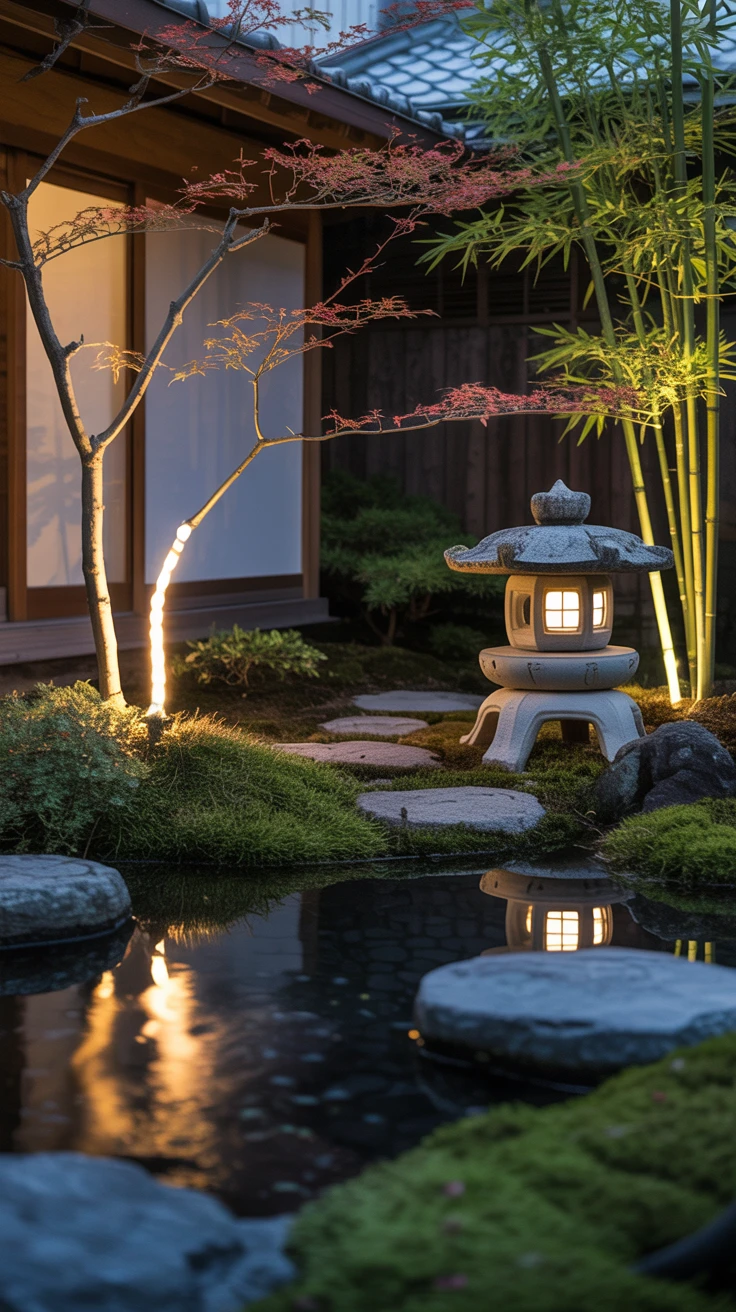
Lighting extends the enjoyment of your small Japanese garden into evening hours and can dramatically transform its appearance. In limited spaces, a few well-placed lights create more impact than many would in larger gardens.
My favorite lighting approaches for small Japanese gardens include:
- Uplight key plants or rocks to create dramatic shadows
- Traditional stone lanterns (or modern interpretations)
- String lights concealed in bamboo or trees
- Small LED lights embedded in pathways
- Submersible lights in water features
I once transformed a client’s tiny 8×10 foot garden by adding just three lights—one uplighting a Japanese maple, one illuminating a stone feature, and a traditional lantern casting soft light on a bench. The nighttime garden became their favorite place to unwind after work.
Pro Tip: Use warm white lighting (2700-3000K) rather than cool white or colored lights. I experimented with blue lighting in a water feature once, thinking it would look “moonlit,” but it created an artificial appearance that detracted from the garden’s natural beauty.
Conclusion
Creating a small Japanese garden isn’t about miniaturizing a large design—it’s about capturing the essence and philosophy of Japanese gardening in a limited space. Through careful selection of elements, thoughtful composition, and attention to detail, even the smallest area can become a profound space for reflection and beauty.
I’ve seen tiny gardens transform not just spaces but also the people who tend and enjoy them. My own modest 10×12 foot garden has become my daily sanctuary, teaching me patience and mindfulness through its seasonal changes and quiet beauty.
Remember that Japanese gardens evolve over time. Start with the basic elements that speak to you most, and allow your garden to develop gradually. The journey of creating and tending your small Japanese garden can be as rewarding as the destination itself.
